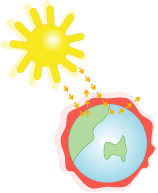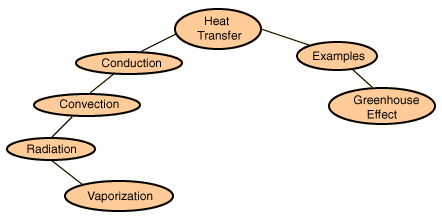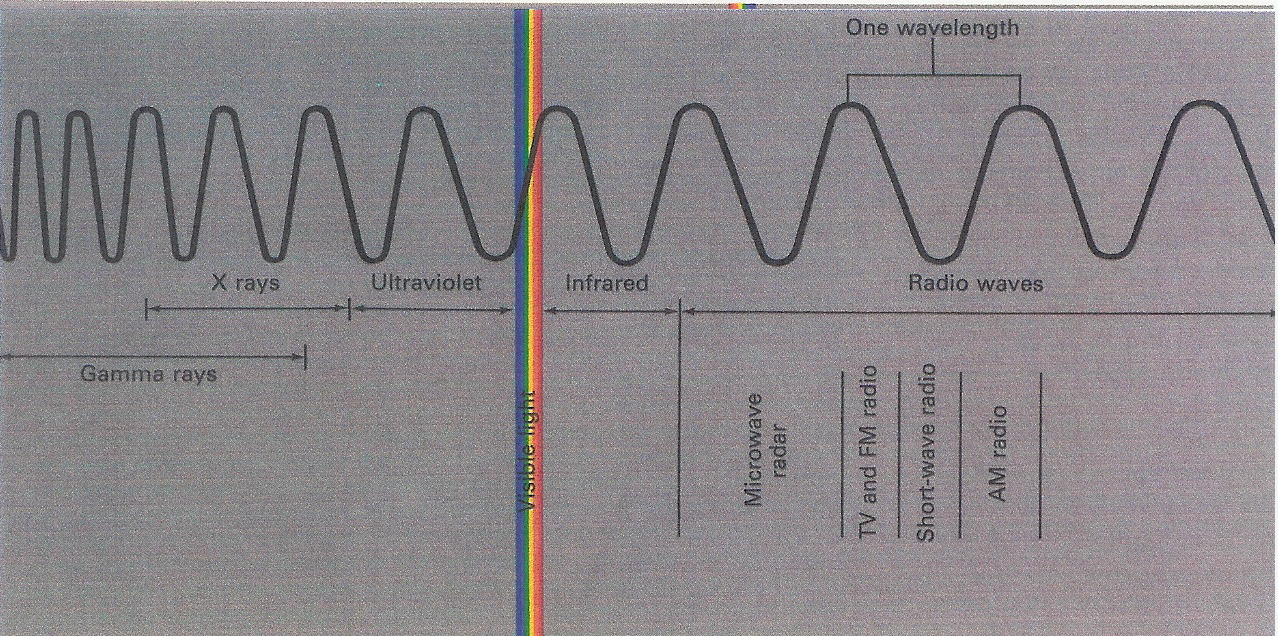
HEAT ENERGY AND THE
ATMOSPHERE
Weather affects so many aspects of our lives. It determines everything from what we wear and how warm or cool to keep our homes to what outdoor activities we can attend.
Weather is actually a daily report of the condition of the atmosphere. One of the most important factors that affects the weather is the amount of heat energy that interacts with the atmosphere.
Nearly all of the earth’s energy comes from the radiant energy of the sun. As the sun’s energy reaches the atmosphere, a small portion of it strikes water droplets and dust particles in the atmosphere and is reflected back into space. Some energy is scattered throughout the atmosphere. Part of the radiant energy from the sun is ultra-violet radiation. Most of it is absorbed by the ozone layer of the upper atmosphere.
Radiant energy that does not get reflected or absorbed by the atmosphere reaches the earth’s surface, is absorbed and is changed into heat. This absorbed energy is spread throughout the atmosphere in three ways: conduction, convection and radiation.

Conduction is the energy transfer in which vibrating molecules pass heat along to other vibrating molecules by direct contact. Air is warmed when it comes into contact with the warm ground. Since the molecules in air are far apart, air is a poor conductor of heat. Only the air less than a few meters above the surface is warmed this way.
Convection is the transfer of heat energy through the movement of a fluid material (gas or liquid). Since air is a fluid, it becomes less dense and rises when it is heated near the surface of the earth. Cooler, dense air from above sinks toward the surface of the earth. As the cool air sinks, it is heated by the ground and begins to rise. This continuous cycle of cold air sinking and warm air rising creates currents that help to warm the earth’s surface relatively evenly.
RADIATION includes all forms of energy that travel through space as waves. These waves travel at a high rate of speed: 3 x 108meters/sec or 186,000 miles/sec. This is known as the Speed of Light. The range of forms of radiation, known as the electromagnetic spectrum, is illustrated in this diagram:

Diagram: The electromagnetic spectrum
Almost all of the shorter wavelengths are absorbed in the upper atmosphere. The ozone layer specifically blocks harmful ultraviolet (UV) radiation. The small amount of UV radiation that does reach the earth’s surface causes changes in our skin, like sunburn or “tanning”. Prolonged exposure may cause abnormal changes in skin cells that may develop into a cancer. However, most of the radiation that reaches the lower atmosphere has longer wavelengths like visible light and infrared radiation (IR). Of the total amount of solar energy reaching the earth’s atmosphere, about 20% is absorbed in the atmosphere by IR. About 30% is scattered back into space or is reflected from clouds or the earth’s surface. The remaining 50% is absorbed by the earth’s surface.
While these three methods of heat transfer mostly demonstrate the heating processes, the process of Advection describes a cooling process. Advective Cooling is a cooling process associated with cloud formation and is produced when wind carries warm, moist air across a cold ocean or region of land. The cold water or land absorbs heat from the air, and the air cools. If the air is cooled to the point of saturation, or to its DEW POINT, water vapor condenses and fog or cloud formation takes places low in the atmosphere. This often occurs in early spring or late fall when temperatures in the lower atmosphere are usually very cool.
For additional information on advection, click on the following link PDF File.
For additional information on how heat travels, click on this link PDF File.